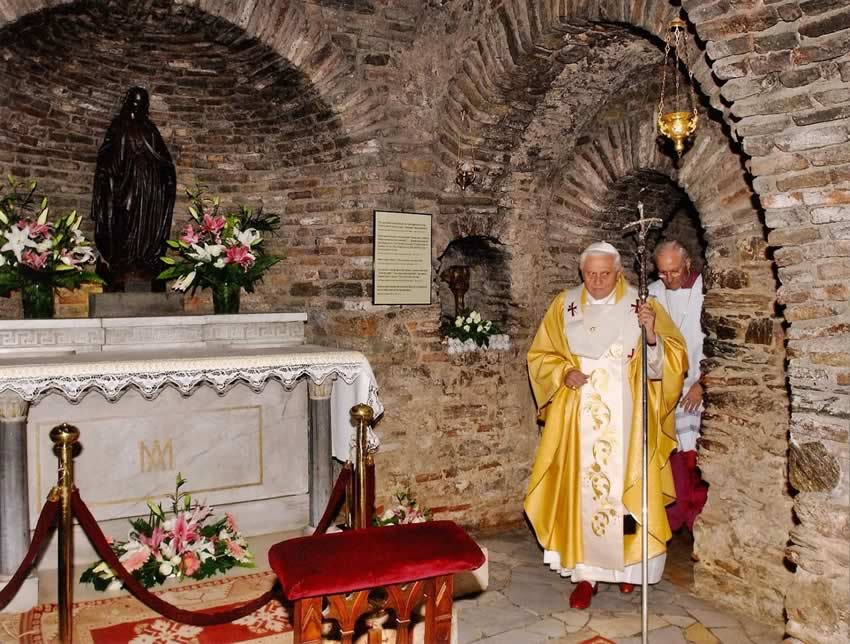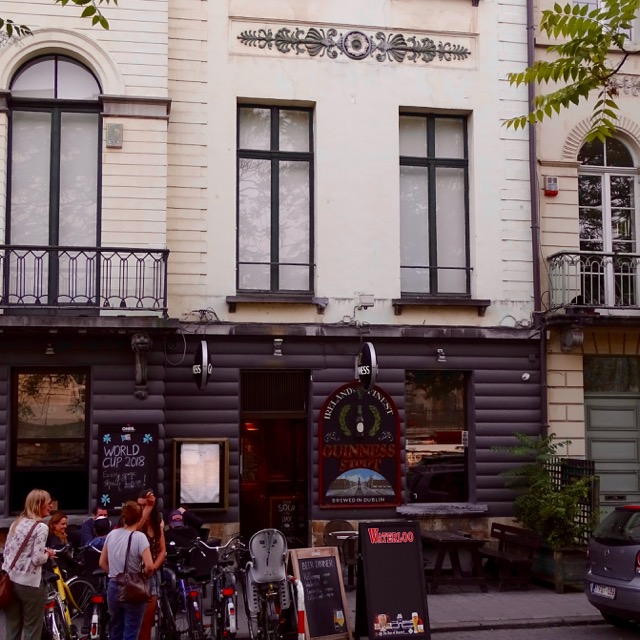Table Of Content

On top of the Mt.Koressos, overlooking Ephesus lies a small brick house which is hidden among all kinds of Mediterranean trees. To be able to reach the Virgin Mary house, visitors follow the road goes up to the mountain and pass among tangerine, pomegranate and olive gardens. After a scenic drive which allows one to view the pretty farming town of Selcuk and Ephesus ancient city. Tourists of all nationalities leave their vehicles in the parking lot and start walking to the house in a peaceful atmosphere.
Clowning for Novices: History and Practice With Rose Carver
Popes such as Paul VI and John Paul II visited the House of Mother Mary, and Pope Benedict XVI held mass there on November 29, 2006. The House of Mother Mary is a sacred site for both Christians and Muslims. The Roman Catholic Church has never pronounced on the authenticity of the house, for lack of scientifically acceptable evidence. It has, however, from the blessing of the first pilgrimage by Pope Leo XIII in 1896, taken a positive attitude towards the site. Pope Pius XII, in 1951, following the definition of the dogma of the Assumption in 1950, elevated the house to the status of a Holy Place, a privilege later made permanent by Pope John XXIII.
Visitor tips:
Ephesus was a great challenge for Paul and the early Christians due to the presence of the highly popular Temple of Artemis. One of the original Seven Wonders of the World, the Temple was a great stronghold of pagan worship in the Roman Empire. Paul’s letter to the Ephesians was included in the New Testament, and Ephesus is prominently mentioned in the Book of Revelation.

The Double Churches
Many Christian historians claim that Jesus commended his mom to his friend and apostle St John, just before he was crucified. After Jesus was raised to heaven, St John, decided that Jerusalem had become too dangerous for Mary, so he took her with him to Ephesus. He brought Mary secretly to this little house on the side of Mount Bulbul where she spent the rest of her days in peace. The German nun told the story of how Mother Mary and John the Apostle came to Ephesus where St. John built her a house.
Is the Virgin Mary buried in Turkey?
Contact us now for the guided tours that give valuable information on the significance and history of the location. This single-story house is a shrine, called Meryemana Evi, translated as “the House of Mother Mary” in Turkish. It’s widely believed that this house is where St. John had cared for the Mother of God during her final years on Earth, that the Assumption took place there. Systematic archaeological investigations of the site took place between 1965 and 1967 under the direction of the Italian archaeologist Adriano Prandi. According to Prandi, the remains of the sacred building are those of a late Byzantine chapel from the 13th century, originally covered with a dome. Structural asymmetries suggest the existence of an older building, particularly evident in the southern side chapel (called "a sleeping cell" or "a Quran room"), where Prandis' excavations were concentrated.
London Marathon 2024: All results and times as women's-only world record broken - complete list
One year later, he granted a plenary absolution to Catholic pilgrims who visited the House with faithful intentions. The Roman Catholic Church has never pronounced on the authenticity of the house, for the lack of scientifically acceptable evidence. Although the place has never been officially recognized by the Catholic Church as the home of Mary, a lot of gestures made by the popes authenticated its history in the eyes of the faithful. An investigation commissioned by the Archdiocese of Smyrna concluded in December 1892 that the assumption that the Blessed Virgin Mary might have died in the house was scientifically and theologically justifiable. The operations of the house as the religious centre were resumed in 1926 but only to a limited extent. Only after the Second World War, in 1947, the Turkish authorities finally recognised the private ownership of the site and the pilgrimages were resumed from 1949.
In the 19th century, a series of visions experienced by a German nun, Anne Catherine Emmerich, led to the rediscovery of this hallowed site. Since then, the House of the Virgin Mary has become a beacon of faith, attracting countless Christian pilgrims who seek to connect with the spirit of Mary and pay homage to her legacy. Popes Paul VI, John Paul II, and Benedict XVI have all graced this site with their presence, further underscoring its spiritual significance. Artemis was the main god of Ephesus and she was respected as a mother goddess. In the ancient times, pilgrims that were attracted by The Temple of Artemis are a part of the crowds that filled the shiny marble streets and forums of this colorful mega-city.
Mary traveled a highly dangerous path to visit Elizabeth - Aleteia
Mary traveled a highly dangerous path to visit Elizabeth.
Posted: Fri, 31 May 2019 07:00:00 GMT [source]
Emmerich, an invalid and stigmatist German nun, was said to have had many visions during the early 19th Century. Emmerich claimed that St. John had taken Our Lady to live in a house near Ephesus, with descriptions even including the surrounding area’s topography, although she herself had never been to Asia Minor. These purported visions were written down by Clemens Brentano, a man who’d interviewed her, and published after Emmerich’s death in 1824.
Private Ephesus Tour
The Marigny was originally a Catholic parish church known as Holy Trinity Catholic Church. Outside the shrine is the “Water of Mary”, a wishing well of sorts that is believed to be the source of miracles. Pilgrims tie their personal wishes and worries on paper or fabric in the hope that its miraculous powers will give them some comfort. Pilgrims can also drink the water from the well as it is believed it can heal all ills. It is a sacred place for Muslims and since Mary (Meryem Ana) is spoken of in the Quran Muslims come to visit as well as Christians. It does feel like a very spiritual place and will stay in your memory for a long time to come, whether you believe or not.
Pope Leo XIII formally recognized Mary’s House in Ephesus as an official place of pilgrimage in 1896. Pope John Paul II visited the shrine in 1979 where he celebrated an outdoor mass for thousands of pilgrims. What is the evidence suggesting that Mother Mary lived and died in Ephesus? Ephesus has had a long tradition of being a centre of religious pilgrimage. The earliest pilgrims arrived to worship the Anatolian goddess known as Kybele. Later, this deity merged with the Greek goddess Artemis and was venerated at the great Artemision, attracting the pilgrims from all over the Mediterranean region.
When you visit the Church of the Virgin Mary, you’ll notice small pieces of paper and napkins hanging on the wall. They write their wishes on these napkins or pieces of paper, which are then attached to thousands of other wishes. During World War I, the property faced challenges, but after the war, the pilgrimages resumed in 1949, aided by the Turkish government’s construction of a paved access road. In 1952, the Association of the Friends of Ephesus and Anne Catherine Emmerich was established to promote pilgrimages. The property changed ownership several times until George B. Quatman, an American entrepreneur, purchased it in 1955, sponsoring further developments around the House of Mary, including homes for priests and nuns.
Whether Meryemana Evi is indeed the house in which Our Lady had lived has neither been declared, nor denied, by the Church. The Church, in her prudence, requires much evidence before declaring that any miracle took place, or that any person is indeed a saint, or that any site is indeed a holy place. Such a process protects us from taking the word of any Joe Schmo, who claims to have performed some miracle, more seriously than we ought to. And it’s because our Church’s prudence that we can know for certain that any recognized miracle, any canonized saint, and any recognized holy place, is indeed the real deal.
England to be re-dedicated as the "Dowry of Mary" amidst coronavirus pandemic - Vatican News - English
England to be re-dedicated as the "Dowry of Mary" amidst coronavirus pandemic.
Posted: Sun, 29 Mar 2020 07:00:00 GMT [source]
The priest believed he had found the house yet it took many years to convince others. These days as well as being a shrine, it is also a chapel and place of worship. In the early 19th century, a nun named Anne Catherine Emmerich took to her bed where she had visions and dreams about the life of Christ and Mary.
One of the most significant events detailed in Emmerich’s visions was the House of the Virgin Mary. According to her accounts, the House of the Virgin Mary, also known as the “Blessed House,” was the place where Mary lived during her final years. Her close friend, the German poet, and writer Clemens Brentano, meticulously recorded these visions. Another account comes from Bar-Hebraeus, a Jacobite bishop who wrote in the 13th century, suggesting that St. John took Mary with him to Patmos and later established the Church of Ephesus. This leaves uncertainty about whether Mary spent her final days in Patmos or in Ephesus, as the exact place of her death is not specified. Due to its strategic geographical position, during the spreading of Christianity, Ephesus was one of the first seven churches established in Anatolia.

No comments:
Post a Comment